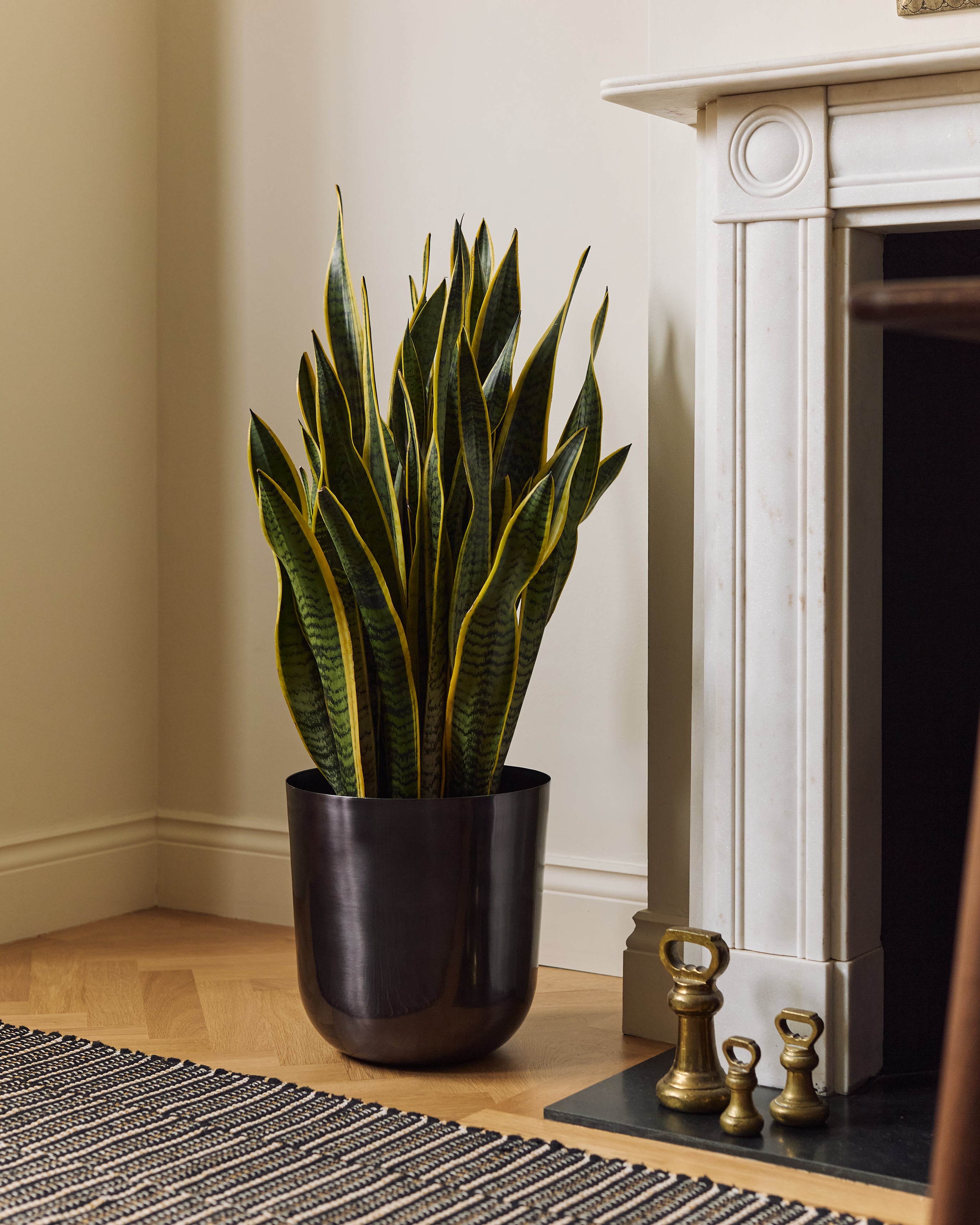Sansevieria, commonly known as snake plant or mother-in-law's tongue, is a hardy and low-maintenance plant that thrives indoors and outdoors in various conditions. Here are some care tips to help keep your Sansevieria healthy:
1. Light Requirements:
- Optimal Light: Sansevieria prefers bright, indirect light but can tolerate low light conditions. It also does well in direct sunlight for a few hours.
- Low Light: The plant can survive in low light, though its growth may slow down.
2. Watering:
- Infrequent Watering: Snake plants prefer to dry out between waterings. Water them once every 2-3 weeks during the growing season (spring and summer) and reduce watering during winter.
- Prevent Overwatering: Avoid waterlogging the soil as Sansevieria is prone to root rot. Ensure the pot has drainage holes.
3. Soil:
- Well-Draining Soil: Use a potting mix suitable for succulents or cacti, as it provides excellent drainage. Adding perlite or sand to the soil helps improve drainage.
4. Temperature and Humidity:
- Ideal Temperature: Sansevieria thrives in a range of temperatures between 16°C and 29°C.
- Humidity: These plants are drought-tolerant and do well in low humidity. They don’t need any extra humidity.
5. Fertilising:
- Light Feeding: You can fertilise during the growing season with a balanced houseplant fertiliser once a month. Skip fertilising in winter when the plant is dormant.
6. Pests and Problems:
- Common Pests: While Sansevieria is resistant to pests, it may occasionally be affected by mealybugs or spider mites. Wipe leaves with a damp cloth and use insecticidal soap if needed.
- Root Rot: The most common issue is root rot, which happens due to overwatering. Make sure the plant dries out properly between waterings.
7. Pruning and Propagation:
- Pruning: Trim off any damaged or yellow leaves using clean, sharp scissors. You can also prune to control the height and shape of the plant.
- Propagation: Snake plants are easy to propagate through leaf cuttings or division. Simply cut a healthy leaf, let it dry for a day, and place it in water or soil to root.
8. Toxicity:
- Toxic to Pets: Sansevieria is mildly toxic to pets if ingested. Keep it out of reach of cats and dogs, as it may cause nausea, vomiting, or diarrhoea.





















